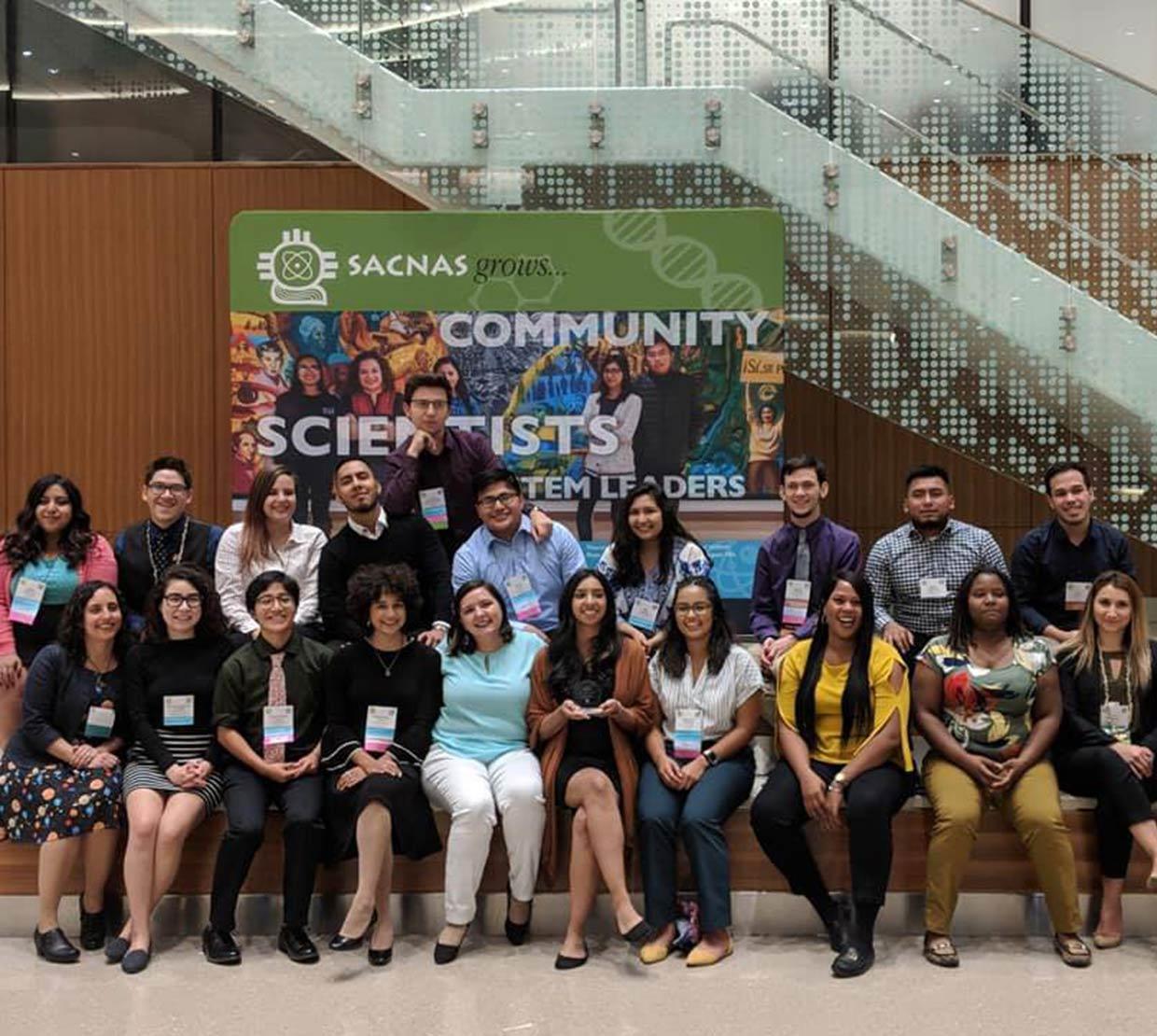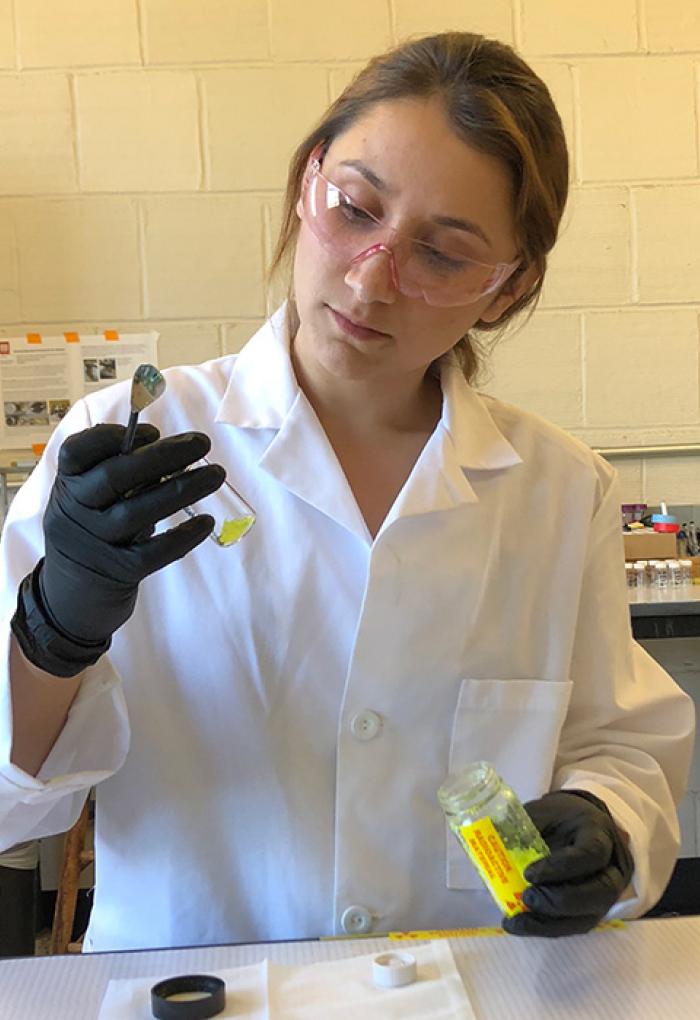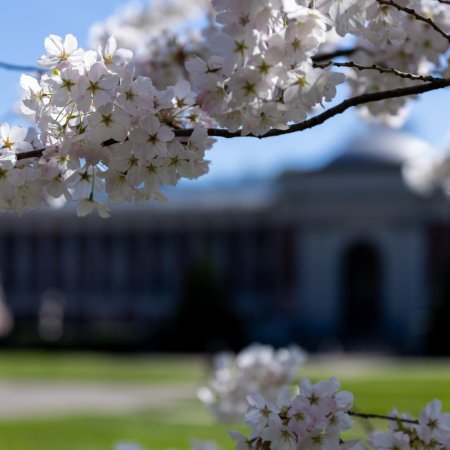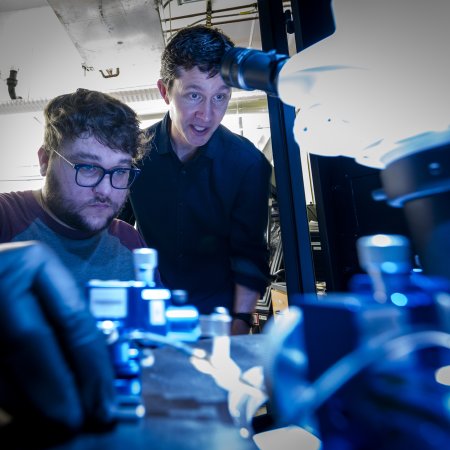Passionate and dedicated mentors have played a vital role in Arteaga’s life. The first in her family to attend college, Arteaga grew up in Merced, California, as the eldest child of an immigrant family from Mexico. Her parents, who have now returned to Mexico, made a living by working in fast-food restaurants.
“I never thought that a girl like me who grew up in these circumstances could potentially work in a lab and go to college,” Arteaga said.
The idea of pursuing research in a lab was especially remote and not something she was even aware of. But an American Chemical Society internship took Arteaga, at the age of 17, to a solar cells and batteries chemistry lab at the University of California-Merced, where she spent her summers during her junior and senior years of high school.
Mentored by an excellent chemistry professor, Arteaga fell in love with the subject. “It was a completely different world that I had no idea existed.” Her research internship paved the way for her chemistry major.
Initially, Ana attended the University of California, Santa Cruz, until a health crisis in her family brought her back to Merced, and she transferred to UC-Merced, spending the next four years continuing battery research in the same lab where she had undertaken research as a high school student.
Chemistry Professor May Nyman has been Arteaga’s ally at Oregon State. Nyman is also her advisor and leads an actinide and nuclear chemistry research group—part of a National Nuclear Security Administration (NNSA) center—of which Arteaga is a key member. They first met when Arteaga visited OSU to attend the Graduate School fair.
Arteaga had made up her mind to go to a university in Texas for graduate work, but UC-Merced counselors urged her to explore the opportunities at OSU. After her first conversation with Nyman, Arteaga recalls, there was no looking back.
“Dr. Nyman conveyed her passion for her research. She told me about her work, and her philosophy,” said Arteaga. “I have never had a female mentor before, so that was a huge thing for me. It was incredible to meet a chemist who is successful and has a family, and is who I want to be in the future.”
Some of the objectives of fundamental actinide chemistry research at OSU are to determine how actinide nuclear material ages, how it travels in the environment in the case of contamination, and how it can be recycled and repurposed (i.e. for nuclear energy). Actinides are all radioactive and include uranium, thorium, and plutonium, elements most commonly used in nuclear reactors and weapons.
Arteaga’s research explores the formation of uranyl peroxide clusters in solution. She was able to prove that the formation of these clusters is a step-by-step process rather than a spontaneous reaction. Arteaga meticulously carried out synthetic experiments, X-ray scattering experiments and crystal growth to make headway with her research investigations.
“I am so excited about Ana’s path and her future, and I am so proud of her. I have come to rely on Ana as a leader in the lab and department for most things,” said Nyman. “Fundamental actinide chemistry research seemed ideal for a go-getter like Ana. She has embraced it with her usual enthusiasm and energy, yet careful work habits.”
Nyman chose Arteaga to present at the first site review of the NNSA program because of her ability to prepare and deliver “excellent and organized presentations.” According to Nyman, Arteaga did a superb job. A well-rounded scientist, Arteaga combines her scientific skills with a zeal for service and outreach. She is actively involved in mentoring and training undergraduate students and recruiting new graduate students for the department and her lab. Arteaga is also responsible for the immensely important tasks of handling radiation safety procedures, documentation, inventory and management of radioactive materials and waste.
“There are so many things that she does ‘under the radar’ that, in my view, has made our lab a dynamic, diverse and exciting place to work,” Nyman remarked.
Arteaga has achieved all of this despite taking a year off from graduate school due to a family medical emergency. During her year at home, Arteaga wasted no time. She became a program coordinator and mentor at UC-Merced’s Undergraduate Research Opportunity Center (UROC), where she worked on professional development opportunities for UROC scholars in addition to a host of administrative tasks. Her experiences caring for her family from a young age have grounded her, giving her a mature, responsible and compassionate outlook on life.
“I have taken two breaks in my career and both times they have been for family. But the breaks gave me time to focus on myself, and find out if I really wanted to be a chemist,” Arteaga observed.
Arteaga was part of a contingent of 23 OSU graduate and undergraduate students from the Colleges of Science, Engineering, Forestry, Liberal Arts and Agricultural Sciences who attended the 2018 SACNAS conference. A dedicated advocate for diversity and inclusion, Arteaga is deeply involved with the SACNAS chapter at OSU where she serves on its executive board as a graduate mentor and works on building a support system for graduate science students of color, who in turn can serve as mentors for underrepresented undergraduate students.
The “go-getter” raised $10,000, out of a total of $20,000, across the OSU colleges, making it possible for all 23 students to attend the 2018 SACNAS conference. Arteaga has been a member of SACNAS since 2013, and was responsible for establishing the 100th SACNAS chapter while she was at UC-Merced.
“SACNAS has been critical to my career. At SACNAS, one gets to see all these people of color who have doctoral degrees, working at universities and in national labs and other organizations,” said Arteaga. “My biggest support systems have been both the SACNAS chapter and my research group in the Department of Chemistry.”
The 2018 National Conference gathered over 4,000 students and professionals. The three-day conference showcased both undergraduate and graduate student presentations, offered scientific symposia, keynote addresses, professional development sessions, and a grand exhibit hall in which students interacted with over 300 exhibitors representing colleges and universities across the nation.
Arteaga is leaving no stone unturned in her quest to forge a career as a nuclear scientist. She is working on publishing articles on her research findings and is collaborating on X-ray absorption studies with a scientist at the Lawrence Berkeley National Laboratory. She will participate in a summer research internship at a Department of Energy lab as part of her Ph.D. training. The internship will take her to the Pacific Northwest National Laboratory in Richland, Washington.
Top image: Members of the OSU SACNAS chapter, which won the “2018 Outstanding Community Outreach for Native Americans Activities” award.





